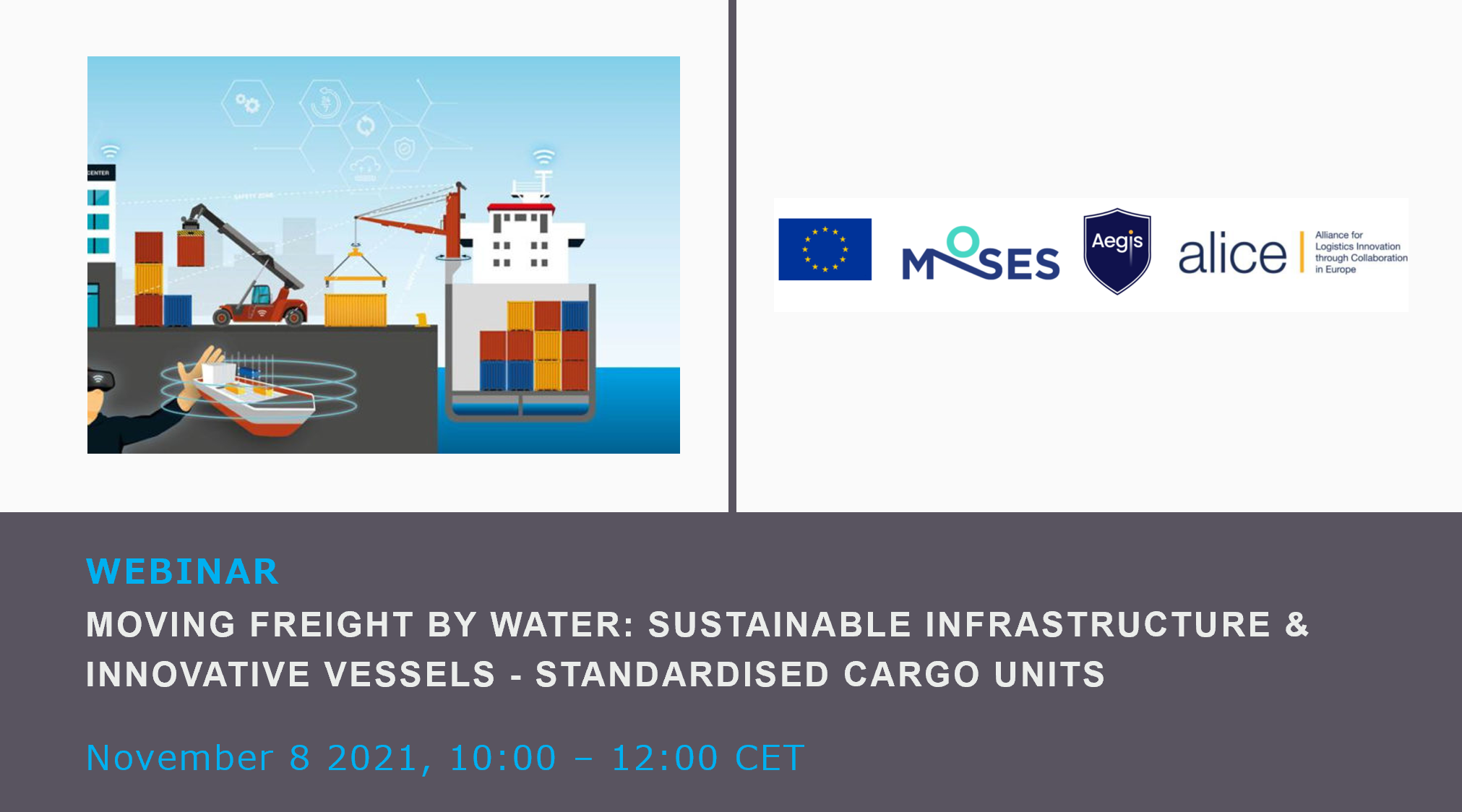Tuesday, October 26th, 2021

In line with the Transport White Paper, 30% of road freight over 300 km should shift to rail or waterborne transport by 2030, and more than 50 % by 2050. Smaller ships with more automation and autonomy in waterborne transport is a promising solution for improving the competitive edge of waterborne logistics as compared to road transport. Increased cargo unit standardisation may be a key element in enabling more efficient and more cost-effective autonomous cargo operations. This webinar will highlight some possibilities and challenges in cargo unit standardization.
There is a series of European initiatives and EU funded research and innovation projects contributing to the overall policy as stated in the Commission’s Transport White Paper. Close contact with potential stakeholders is an important part in all these activities for being able to operationalise innovations.
The questions to be investigated in this webinar are:
1. What types (LoLo/RoRo/other, eg pallets) of loading units are more attractive?
2. What about size, any limitations due to autonomy, green policies or intermodality?
3. Is cargo unit standardization key for a more efficient cargo handling operational system?
4. What are the challenges and what are the solutions that the projects propose?
10:00 – 10:05 Welcome and introduction; the overall purpose of the workshop by Ørnulf J. Rødseth, SINTEF Ocean/AEGIS
10:05 – 10:15 A broader perspective, new constraints because of autonomy and green initiatives by Fernando Liesa, ALICE
10:15 – 10:30 The AEGIS project: Discussion on standardisation needs by Harilaos Psaraftis, DTU
10:30 – 10:45 The MOSES project: What are the possibilities within freight transport, how can autonomy attract cargo to waterborne transport? by Nikos Ventikos, MOSES
10:45 – 11:00 The CLUSTERS 2.0 project: Presentation of the New Modular Loading Units by Ton Bertens, VanEck
11:00 – 11:45 Panel discussion Moderated by Ørnulf J. Rødseth
11:45 – 12:00 Summing up and way ahead by Ørnulf J. Rødseth
More information, please check the Aegis project website